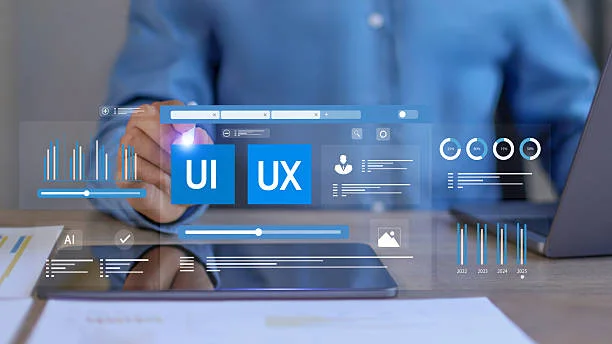When you’re browsing a website or using an app, you probably don’t think much about what makes it easy to use or why it looks the way it does UI Design vs. UX Design. But the user interface design and the overall experience you have with it are super important.
The terms “UI design” and “UX design” come up a lot in the tech world, but they’re often confused. Are they the same thing? Not quite. They’re both essential parts of creating a digital product, but they focus on different things. Let’s clear up what each one is, how they’re different, and why both matter so much.
What’s UI Design All About?
User interface design (UI) is about the stuff you see and interact with on your screen. It includes everything from buttons, icons, and fonts to how things are arranged on the page. When designers talk about UI, they’re focused on creating a visual layout that’s both attractive and functional. UI is all about how a product looks and how it invites you to interact with it.
For example, when you’re using an app and you know exactly where to tap to find what you need, that’s UI working well. It’s about making sure the user can quickly understand how to interact with everything.
What’s UX Design All About?
User experience (UX) design, on the other hand, is about how a person feels when they interact with the product. It’s the entire journey of using the product, from first impression to the end. While UI focuses on the look of things, UX is about making sure everything works smoothly and logically, so users feel like they’re in control. The goal here is to make sure the experience is easy, enjoyable, and solves whatever problem it’s meant to.
Think of it this way: UX is how the product works, while UI is how it looks. UX designers take into account how people use products, what frustrates them, and what makes them feel good about their interaction.
What’s the Real Difference Between UI and UX?
It’s easy to mix them up because both are essential to a good product, but let’s dig into the differences.
Focus and Purpose
- UI Design: It’s about the visual elements, the layout, and the style of the product. UI design is about the details—the buttons, the colors, the typography. It makes sure everything looks clean and cohesive.
- UX Design: This is bigger picture stuff. UX design focuses on how users feel when they’re using a product. It involves understanding user behavior, solving problems, and creating a smooth flow of interactions.
The Process
- UI Design: This involves creating visual components, wireframes, and prototypes. It’s about figuring out what users will click, tap, or swipe. UI design uses tools like Figma, Adobe XD, or Sketch to design those visual elements.
- UX Design: UX involves a lot of research, testing, and iteration. It’s about user interviews, wireframing, and creating user flows. UX designers are constantly figuring out how to improve the product so users have a better experience.
The Goal
- UI Design: Aims to create a visually appealing product that’s easy to interact with.
- UX Design: Aims to create a seamless, enjoyable experience for the user. It’s about making sure everything works as it should and that the user is happy along the way.
Why UI and UX Matter for Great Digital Products
So, why do these two matter? It’s simple: great UI and UX are essential to creating products people love. Here’s how they make a difference:
1. Happy Users Make Happy Products
If the UI is beautiful and easy to use, that’s great. But if the experience of using the product feels off, people will ditch it. Conversely, a great UX that’s easy to navigate can make up for less-than-perfect design. Together, they ensure a satisfying experience, which keeps users coming back.
2. Better Conversions and Engagement
When your UI is clear and your UX is smooth, users are more likely to stick around and actually use the product. A product that’s easy to use and looks great tends to drive higher engagement and more conversions. Think about an app that’s frustrating to navigate—it’s going to lose users fast. But a well-designed product? People will want to keep coming back.
3. Fewer Fixes Down the Line
If you focus on user experience early in the process, you’ll catch issues before they become costly to fix. And, if you create a good UI that fits with the overall experience, you’ll save time in development. Everyone’s happy when things are smoother from the start.
UI and UX: Working Together for the Win
UI and UX are often seen as two separate things, but the best products out there use both to their full potential. They work together to make sure the user not only enjoys how the product looks but also loves how it works. For example, when you’re using an app, the interface (the UI) might make it look stylish, but the ease of use (the UX) will keep you engaged.
If either UI or UX is neglected, things get messy. You might end up with an app that looks gorgeous but is impossible to use, or an app that’s easy to use but so boring to look at that no one wants to engage with it.
Wrapping It Up: Why UI and UX Are Essential
In the end, UI and UX go hand-in-hand to create the kind of digital products that people love to use. Good UI design makes a product look great and easy to use, while good UX design makes sure the whole experience is smooth, logical, and enjoyable.
If you’re building something that’s meant to be used by others, keeping both UI and UX in mind is crucial. Together, they help create products that not only look good but also work like a charm.
Uncover hidden gems and unique perspectives only at Management Works Media.






